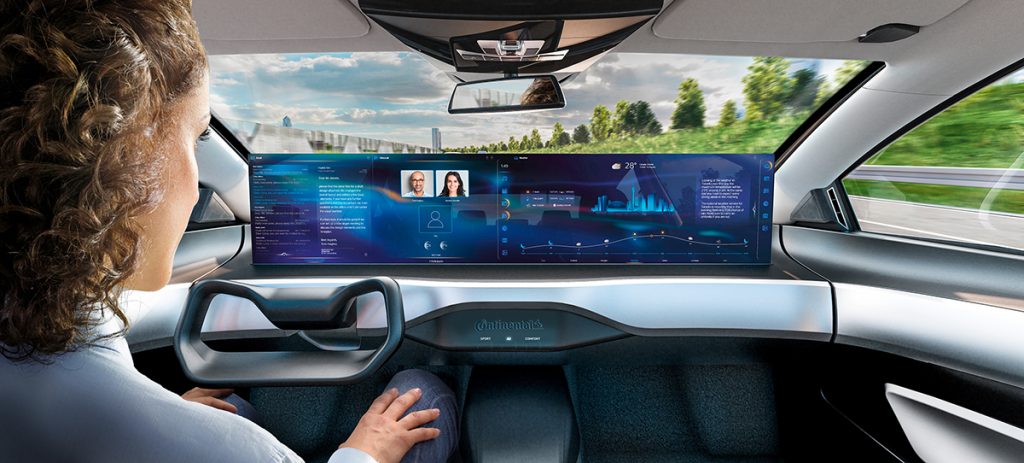
Ms. Divya M S., Senior Technical Architect at QuEST Global
The Splurge of Internet giving a push to Infotainment
The use of digital technology has had a long stretch of rapid growth over the years. The increase in the number of devices capable of supporting digital media along with increasing internet access speed has provided consumers with an option to access the media content of their choice be it information, entertainment, or social activity – anytime, anywhere. To a large extent, this emerging technology platform has presented the automobile sector with various opportunities to innovate. That being said, infotainment systems with intuitive UX and seamless connectivity are no longer a luxury but an inevitable requirement even in low-tier automobiles.

Automotive Human machine interfaces (HMI) have changed the way one interacts with their vehicles, a technology that came as a replacement for in-vehicle entertainment units has swiftly evolved itself into an infotainment solution. However, it comes with its share of challenges.Let’s discuss a few of them:
The Challenges
Google has stepped into the automotive space through its Car OS – an Android Automotive OS that offers a plethora of extensions over traditional Android OS. This has given confidence to manufacturers to build custom In-Vehicle Infotainment (IVI) systems with their desired add-ons. However, the native Android OS look and feel is neither preferred by OEMs nor users. This is where the challenge comes on how OEMs can overcome this to make unique UX that enriches brand identity in the shorter development cycles.
Android Automotive offers openness, customization, and scale to automotive infotainment systems and head units. It is ideal for mass-market cars because it relieves OEMs from the costly burden of developing a custom proprietary OS from scratch by providing a pre-developed set of automotive extensions (like media, navigation, and communication stacks). In addition, the easily available Google service provides access to other connected devices, thus helping bring a smartphone-like experience to the cockpit at a low cost. Google is committed to making Android a full-fledged turnkey automotive infotainment platform by constantly adding new features and enhancements to the Android Automotive OS. This version of Android is compatible with several hardware platforms and is accessible to the larger developer community.
There is no doubt that the traction generated by Android Automotive is real however the question that remains is whether Android Automotive by itself can meet the soaring demands of OEMs for sophisticated human-centric Human Machine Interfaces (HMIs) in the shortest development cycles.
Automakers have high expectations for HMI comparable to modern game engines as screen space is valuable real estate and a core part of brand identity. Thus, the customization beyond the native OS look-and-feel is critical. OEMs on the other hand are free to customize the UI however the efforts required in doing so are tremendous.
Android Studio, the preferred Integrated Development Environment (IDE) is free but programmer-oriented. With Android Studio, the gap between UX designers and developers is large. Once designers prepare UX design for each screen using tools like Photoshop, Sketch, etc. graphic assets are needed for each screen component and extracted as individual files. Developers put these assets in the resource folder of the Android project, binding them to UI controls through layout definition files (XMLs) specifying their properties like position, scaling, etc. manually in these XMLs. Only when the screen is implemented and deployed on the target hardware can the developer identify a particular design issue and communicate with the designer. In such a scenario, the designer modifies the design, then the developer modifies the implementation with new assets, and the loop continues to extend the overall development schedule.
Moreover, attempting a 3D UX development in native Android would be hectic for developers because Android Studio doesn’t offer a 3D scene viewer where HMI developers can import 3D models made with design tools. Besides, OEMs prefer scalability of HMI across different hardware platforms, operating systems, and reusability across various models. Native Android-based HMIs face a drawback in meeting these requirements.
The Solution to the Challenges
A common approach to address these issues is developing a user interface using a dedicated high-end HMI development framework and integrating its UI layer with the Android Automotive OS. Rightware Kanzi, Altia Design, Candera CGI Studio, and Qt Design Studio, among others, are examples of such high-end HMI development tools. They reduce the gap between designers and developers, allow direct import of 2D graphics and 3D models, facilitate conversion to UI components, and prepare UI layouts without writing code.
Nevertheless, such high-end HMI development tools have various limitations. Integration and version control of work products from multiple developers becomes difficult. Debugging and profiling are not as smooth as with a native IDE. These are niche tools, so it’s difficult to hire skilled people. Due to the lack of a strong developer community, developers need to rely on their respective vendors to solve challenges pertaining to tools and clarify questions during the learning phase. Many of these tools are very expensive. Therefore, it is not economical to develop a complete HMI using these tools.
The key is to find the right balance between Android HMI and high-end HMI to employ a hybrid model of development. By finding that right balance between a high-end HMI development framework and a native Android Automotive OS, a new generation of infotainment systems is here to win the hearts of end-users with ease of use and rich graphics, and OEMs will manage costs. Brands can therefore increase their value by maintaining it.






